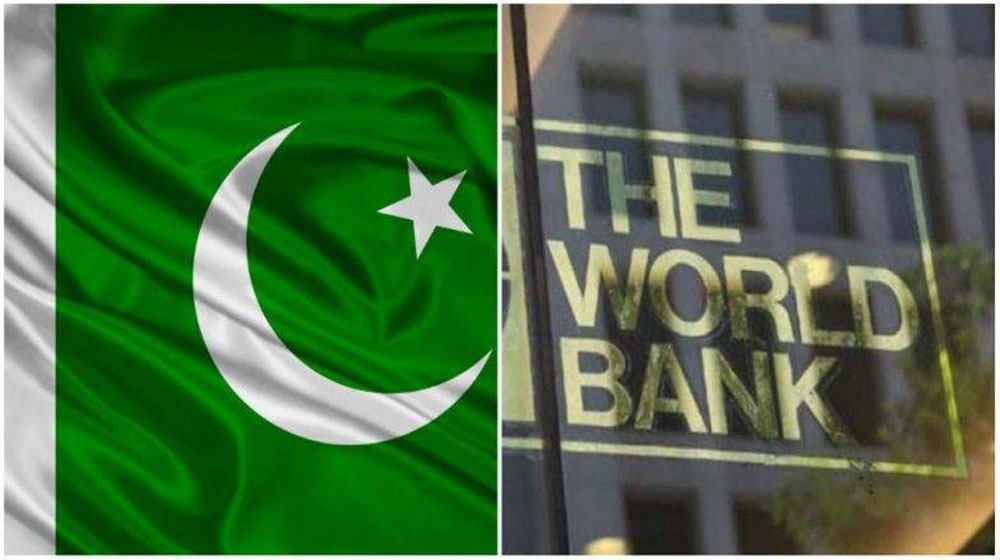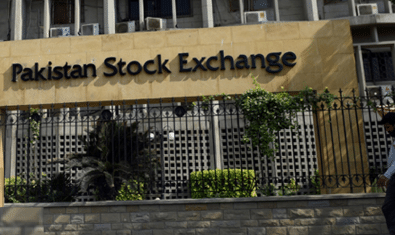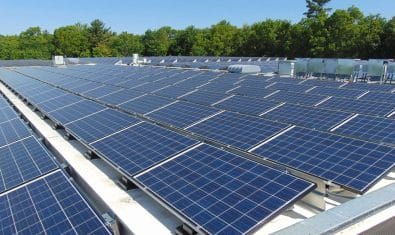Pakistan’s GDP growth is expected to reach 1.3 percent in the fiscal year ending June 2021, according to a statement by the World Bank (WB). Although it is slightly better than the forecast from January, the recovery remains fragile as the forecast was predicated on the absence of significant COVID-19.
A report by the WB titled ‘South Asia Economic Focus Spring 2021 South Asia Vaccinates’ detailed that the major risks to the outlook include the possibility of new waves of infections, the emergence of new vaccine-resistant strains, and setbacks in mass vaccinations.
Additionally, more delays in the implementation of critical structural reforms could lead to further fiscal and macroeconomic imbalances.
The report highlighted that headline inflation fell over July-February fiscal year 2021 (y-o-y), and is still high at 8.3 percent on average, mostly on account of high food inflation.
ALSO READ
Pakistan Receives Third Tranche of IMF EFF
The WB has also projected inflation at nine percent for 2020-21, as the report mentioned that “Pakistan’s inflation in the fiscal year 2021 is still high at 9 percent amid continued high food inflation due to continued supply-side disruptions—some related to containment measures — but also because of monsoon rains in July and August 2020 and locust attacks”.
The current account deficit is projected to narrow to 0.8 percent of the GDP in the fiscal year 2021 as a wider trade deficit is more than offset by stronger remittances inflows. However, it is expected to increase over the medium term, and the current account deficit is projected at 1.3 percent in 2021-22.
While fiscal consolidation efforts are expected to resume, the deficit is projected to remain elevated at 8.3 percent of the GDP in the fiscal year 2021, partly due to the settlement of arrears in the power sector.
Output growth is expected to recover gradually over the medium-term, averaging 2.2 percent over the fiscal year 2021- 23, mostly due to contributions from private consumption. However, sectors like Agriculture that employ the poorest are expected to remain weak, and therefore poverty is likely to remain high.
The baseline outlook is predicated on the absence of significant infection flare-ups that would require more extensive lockdowns.
Public debt will remain elevated in the medium term, as will Pakistan’s exposure to debt-related shocks. Pakistan’s debt is rising, and remains a source of vulnerability. Public debt, including guaranteed debt, reached 87.9 percent of the GDP at end-December 2020, up from 86.7 percent of the GDP at end-December 2019. The report revealed that debt (percent of the GDP) is projected at 93.9 percent by end of 2020-21.
It also detailed that the end of the moratorium on the Pakistani government borrowing from commercial banks poses a risk to the country’s financial sector. The total revenues increased in Pakistan in the fiscal year 2019-20 as higher non-tax revenues came from higher profits from the central bank which holds a significant portion of the government debt.
In line with the recovering of economic activity, the total revenues in Pakistan also grew over the first six months of the fiscal year 2020-21.
The report added that Pakistan’s economy was severely impacted by the COVID-19 shock in the fiscal year 2020, leading to an increase in poverty.
Pakistan’s economy has been growing slowly over the past two decades. The annual per capita growth has averaged only two percent, which is less than half of the South Asia average, partly due to inconsistent macroeconomic policies and an under-reliance on investment and exports to drive economic growth. Short periods of rapid consumption-fueled growth frequently led to a sizable current account and fiscal deficits that ultimately required policy tightening, resulting in recurrent boom-bust cycles.
The containment measures adopted in response to the COVID-19 pandemic had led to a collapse in economic activity during the final quarter of the fiscal year 2020. Consequently, the GDP growth is estimated to have contracted by 1.5 percent in the fiscal year 2020.
ALSO READ
FBR Continues Crackdown on Smuggled Cigarettes
Half of the working population saw either job or income losses, with informal and low-skilled workers employed in elementary occupations facing the strongest contraction in employment. As a result, poverty incidence was estimated to have increased from 4.4 to 5.4 percent in the fiscal year 2020, and expected to reach 5.6 percent by end 2020-21 while using the international poverty line of $1.90 PPP 2011 per day, with more than two million people falling below this poverty line. Moreover, 40 percent of households suffered from moderate to severe food insecurity.
The report further noted that output growth is expected to recover gradually over the medium-term, averaging 2.2 percent over the fiscal year 2021-23, mostly due to contributions from private consumption. However, the sectors like agriculture that employ the poorest are expected to remain weak, which is why poverty is likely to remain high.
The baseline outlook is predicated on the absence of significant infection flare-ups that would require more extensive lockdowns.
On the production side, crop production was relatively weak in the first six months of the fiscal year 2021, as cotton production was adversely affected by heavy monsoon floods.
Both foreign direct investment and portfolio investment inflows decreased during the first half of the current fiscal year, but the improved current account supported a balance of payments surplus. The Pakistani rupee appreciated by 5.4 percent against the US dollar from end-June 2020 to end-December 2020, and official foreign exchange reserves increased to $14.9 billion by end-December 2020 which was equivalent to 3.3 months of imports of goods and services.
The fiscal deficit widened over the first six months of the fiscal year 2021 (Y-o-Y), as expenditure growth outpaced an increase in revenues. In line with the recovering of economic activity, the total revenues grew by 3.7 percent. The total expenditures rose by 6.2 percent over the same period, partly driven by higher interest payments.
The report further noted that since mid-March, India, Pakistan, and Bangladesh have been experiencing surges in coronavirus cases, which may require new restrictions. With the exception of Afghanistan and Pakistan, South Asian countries have significantly lower than average fatality-to-case ratios.
The poorer income groups in India, Bangladesh, and Pakistan suffer a greater fall in per capita consumption than the richer income groups do. Moreover, the income gap between the poorest 90 percent of the population and the richest 10 percent widened even further in India and Pakistan because of the pandemic (by 13.2 percentage points in India and 7.7 percentage points in Pakistan).
The report noted that the cost per dose for the 50 percent of the population for whom the government finances the vaccine is differentiated by country. India pays approximately $3 per dose (Serum Institute prices), and Bangladesh, Afghanistan, Maldives, Nepal, and Sri Lanka pay $4-5 each (based on agreements made or likely to be made with India).
Given the lack of information on Pakistan’s vaccine procurement arrangements, the Gavi-recommended $7 per dose cost is an assumption. In particular, the estimated costs in 2022 exceed two percent of the government budget in Afghanistan (5.7 percent), Pakistan (2.7 percent), Bangladesh (2.5 percent), and Nepal (2.2 percent), which is likely to be difficult for their governments to cover.
According to the report, if governments targeted vaccinating 100 percent of the population that is 18 years old and above rather than setting a 70 percent coverage target for the entire population, the total costs to the government would fall by 34 percent in Afghanistan and 19 percent in Pakistan (given their relatively young populations).
Most of the countries in the region are above the expected immunization rates and given their level of development, Afghanistan and Pakistan fall below those rates. This is concerning because polio is prevalent in the two countries, and the infection rates have probably worsened due to the disruptions in the health system caused by the COVID-19 pandemic.
Afghanistan, Pakistan, Bangladesh, Nepal, and India all show coverage that is significantly below the global average, suggesting that their health systems might not be fully prepared for COVID-19 immunization and may encounter challenges in ensuring its wide coverage.
Access to vaccination differs significantly across wealthy groups, which points to the potential for unequal access to the COVID-19 vaccine as well. Inequality in access to the BCG and DPT vaccine is particularly high in Afghanistan, Pakistan, and India. The gap in adult immunization coverage between the poorest and richest quintiles is also large in Pakistan as 47 percentage points separate the two groups.
Hartwig Schafer, the World Bank Vice President for the South Asia Region said, “We are encouraged to see clear signs of an economic rebound in South Asia, but the pandemic is not yet under control and the recovery remains fragile, calling for vigilance”.
He added, “Going forward, South Asian countries need to ramp up their vaccination programs and invest their scarce resources wisely to set a foundation for a more inclusive and resilient future.”
Hans Timmer, the World Bank Chief Economist for the South Asia Region, said, “The health and economic benefits from vaccinations greatly exceed the costs involved in purchasing and distributing vaccines for all South Asian countries”.
He remarked that “South Asia has stepped up to vaccinate its people, but its healthcare capacity is limited as the region only spends 2 percent of its GDP on healthcare, lagging any other region,” and added that “the main challenge ahead is to reprioritize limited resources and mobilize more revenue to reach the entire population and achieve full recovery”.





















